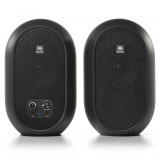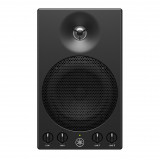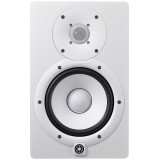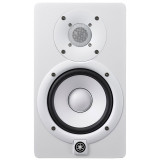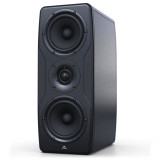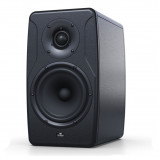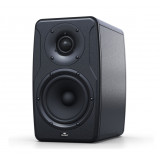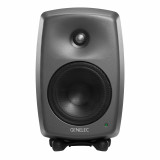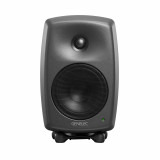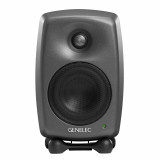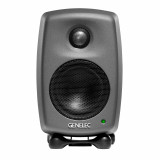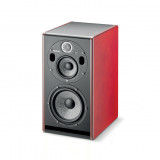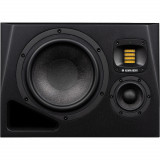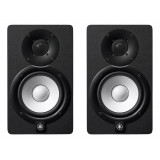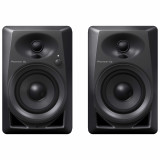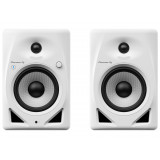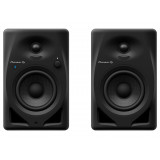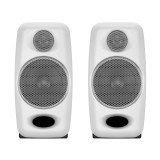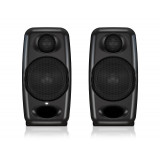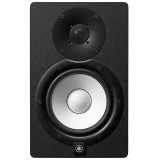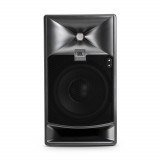Studio monitors
The studio monitors speakers are designed to provide a flat frequency response, so that the audio signal is reproduced with maximum accuracy. Monitors are designed to prevent artificial directional bass boost, treble, or other frequencies in an attempt to make the sound of the speakers 'good' and also directed at avoiding the resonance of the speaker boxes. According to the studio, there are three types of standard monitoring: near, middle and far field. Near field – monitors power not exceeding 100 watts, and a diameter of the speaker to 8 inches. Located at a distance of 1.5 meters from the sound engineer. Middle and far field – used in professional studios, studio monitors are located at a considerable distance and have more power.
Monitor types
Studio monitors are commonly defined as either active or powered monitors. Active means that they have a power amplifier built into the speaker cabinet (the body of the speaker itself). The alternative is passive speakers, which require a separate power amplifier to work – much like home stereo or hi-fi speakers. Active speakers allow for higher accuracy in sound because each of the speaker components has its own individually powered amplifier. The woofer (the big cone at the bottom of the speaker), the tweeter (the smaller cone at the top of the speaker) and the mid-range speaker (not that common, but it is available on some speakers) all have their own powered amps. It allows for increased separation in frequencies and a greater dynamic response – the differences between pianissimo and fortissimo can really jump out at you with the right set of monitors. Passive monitors, on the other hand, require a separate powered amplifier, but they have their own advantages too. Because of this requirement, they allow you some flexibility in customizing the components and set up of your multi-speaker array. Additionally, they are usually cheaper.
Near, mid or far-field design
Near-filed, mid-field and far-field refers to the listening configuration a monitor is designed for, with near-field being optimized for a close listening distance and far-field designed to carry the sound accurately over a greater distance. Near-field monitors are great for most studio applications because they allow you to hear the sound coming directly from the speakers, rather than sound that reflects off the walls and ceiling. They house relatively small drivers in compact enclosures and are positioned directly in front of you and angled inward so your head forms the point of an equilateral triangle between the two monitor enclosures. When it comes to larger studios where the speakers need to be positioned further away, mid- or far-field monitors will be better suited as they are configured differently to deal with larger spaces. They generally have larger drivers and can deal with much lower frequencies. This is why mid/far-filed monitors are widely used in film scoring studios in order to create a virtual sound environment using sound effects and real-life sound as well as music.
Connectivity
Any professional monitor will have balanced inputs either XLR, TRS or combination inputs. Your specific needs will be based on the outputs of your audio interface, but cable adaptors for every situation are readily available. If your interface does not have balanced outputs you should consider upgrading, since unbalanced lines will pick up noise from other equipment, electrical lines, and RF interference, etc. That said, many monitors still provide unbalanced input jacks as well such as RCA or 3.5 mm inputs, should the need arise for connecting an unbalanced signal directly to the speaker.
Buy studio monitors in Musician.UA
Not sure which type of studio monitors to choose? Our sales consultants will help you choose the right product for you. Online consultation is also possible. You can buy studio monitors in our stores. It is also possible to place an order on our website musician.ua. Delivery is carried out all over Ukraine. Thanks to the wide assortment, everyone will be able to choose a product that suits the characteristics and cost. We take care of the quality of service and do everything possible to make sure that you are satisfied with your purchase.

 ARTURIA Instruments
ARTURIA Instruments
 Drums for Therapy
Drums for Therapy  Harps
Harps
 Lyres
Lyres
 Didgeridoo
Didgeridoo
 Sound Processing
Sound Processing
 Mixing Consoles
Mixing Consoles
 Vinyl Players
Vinyl Players
 Phono Correctors
Phono Correctors
 Karaoke
Karaoke
 Stands and Holders
Stands and Holders
 Trolleys
Trolleys
 Computers, Electronics
Computers, Electronics
